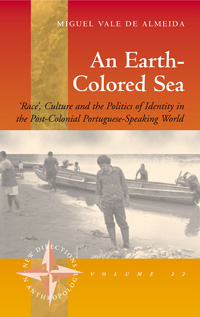The Dougla in Trinidad’s Consciousness
History in Action: Online Journal of The University of the West Indies (St. Augustine. Trinidad and Tobago) Dept. of History
Volume 2, Number 1 (April 2011)
7 pages
ISSN: 2221-7886
Feme Louanne Regis
University of the West Indies, St. Augustine Trinidad and Tobago
Trinidad is a complex multi-ethnic society where the two major ethnic groups – Africans and Indians – are in competition for power: economic, political and social. These contestations force the meeting and mixing of these two groups but militate against their merger. This is a reality that impacts significantly on the lives of their offspring the Dougla who are birthed into this complex social, cultural and linguistic situation and whose social position within this divide remain unclear and uncertain. Before 2011, Douglas were not designated in official censuses as a marginal ethnic community or even a biracial minority group leaving them free to declare themselves African, Indian or members of the umbrella categories Mixed and Other. Despite the steady increase in the number of people who define themselves as Douglas, their position in Trinidadian society remains ambivalent and indeterminate. This presentation maps the comparative invisibility of Douglas in Trinidadian society from the second half of the 19th and 20th centuries via an examination of social history and anthropology, creative writing, and popular culture.
Introduction
Douglas, the offspring of Indo-African unions, occupy an ambiguous position in Trinidadian society. Etymologically, the word Dougla is linked to dogla which is of India origin and is defined by Platts (1884, 534) as “a person of impure breed, a hybrid, a mongrel; a two-faced or deceitful person and a hypocrite.” In Bihar, Northern India, from where many Indian indentured labourers migrated to Trinidad, dogla still carries the meaning of a person of impure breed related specifically to the “progeny of inter-varna marriage, acquiring the connotation of ‘bastard’, meaning illegitimate son of a prostitute, only in a secondary sense” (Reddock 1994, 101). We do not know how and when the term Dougla became equated to the offspring of Indian-African unions in Trinidad but we may surmise that it originated in traditional Indian contempt for the darker-skinned (Brereton 1974, 24).
Recognition of Douglas
Wood (1968) does not recognise a Dougla presence in 19th century Trinidad. He trusts the official report of the Protector of the Immigrants that as late as 1871, 26 years after their arrival, “no single instance of co-habitation with a Negro existed among the 9,000 male and female indentured labourers” (1968, 138). He overlooks the 1876 testimony of John Morton, to the effect that “a few children are to be met with, born of Madras and Creole parents and some also of Madras and Chinese parents—the Madrasee being the mother” (Moore 1995, 238).
Ramesar (1994) accepts the reality of inter-racial sexual relations in the early twentieth century, but seems reluctant to acknowledge Africans as sexual partners for Indians and nowhere mentions the word Dougla. The Dougla presence is instead hidden in the generic term “Indian Creoles.” Examining the statistics testifying to Indian inter-racial sexual liaisons, Ramesar argues that such relationships happened more readily in Port of Spain and in Cedros than in central Trinidad, where the majority of Indian communities were located. Yet, the demographic evidence indicates African-Indian unions even in areas dominated by Indians (Harewood 1975).
According to Ramesar, the Indian fathers of mixed-race children were “probably westernized individuals who sought educated spouses.” She concedes, however, that “changed social relationships had also affected the lower levels in society” (146). Yet, the literary works of C.A. Thomasos (1933), C.L.R. James (1929; 1936), and Alfred Mendes (1935) demonstrate that inter-racial mixing was not necessarily inspired by social climbing. In these works, Douglas are presented as deracinated individuals engaged, as part of Black urban lower class, in the amoral struggle for survival.
In the 2005 feature address at the launch of the Indian Arrival Day Heritage Village, Elizabeth Rosabelle Sieusarran, a University of the West Indies lecturer, said:
In our quest for establishing unity among our people, it is imperative for us to note a rapidly increasing phenomenon of westernisation of the Indian community. This has resulted in the prevalence of inter-caste, inter-religious and inter-racial marriages. The Indian community has to decide how to handle the offspring of this significant group locally referred to as douglas. Do we accept them or ostracise them? Whatever course is adopted, the fragmentation of the Indian community must be avoided (Trinidad Express 16th May 2005, 5).
Sieusarran thus reduces the problems caused by westernisation to the fragmentation within the Indian community allegedly created by exogamy. She then ignores the progeny of many such relationships and targets Douglas as the source of that fragmentation. While acknowledging the organic connection of the Douglas to the Indian communities, Sieusarran indicates that Douglas are still perceived as a problem by some Indians even while they advocate co-existence in a multi-cultural society….
Read the entire article here.






